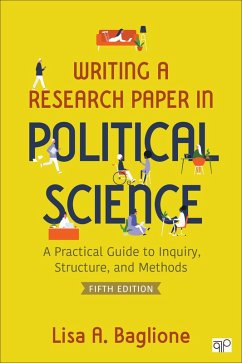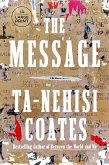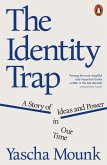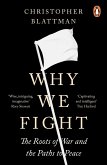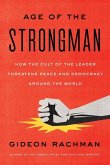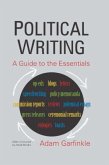Lisa A. Baglione
Writing a Research Paper in Political Science
A Practical Guide to Inquiry, Structure, and Methods
Versandkostenfrei innerhalb Deutschlands
42,99 €
inkl. MwSt.
Versandkostenfrei*
Erscheint vorauss. 14. Mai 2026
Melden Sie sich
hier
hier
für den Produktalarm an, um über die Verfügbarkeit des Produkts informiert zu werden.

21 °P sammeln
Lisa A. Baglione
Writing a Research Paper in Political Science
A Practical Guide to Inquiry, Structure, and Methods
- Broschiertes Buch
A practical, comprehensive guide to help students navigate the process of writing research papers
Andere Kunden interessierten sich auch für
![The Message The Message]() Ta-Nehisi CoatesThe Message23,99 €
Ta-Nehisi CoatesThe Message23,99 €![The Identity Trap The Identity Trap]() Yascha MounkThe Identity Trap9,99 €
Yascha MounkThe Identity Trap9,99 €![Why We Fight Why We Fight]() Christopher BlattmanWhy We Fight9,99 €
Christopher BlattmanWhy We Fight9,99 €![History of Political Theory, Volume II History of Political Theory, Volume II]() George KloskoHistory of Political Theory, Volume II49,99 €
George KloskoHistory of Political Theory, Volume II49,99 €![The Age of the Strongman The Age of the Strongman]() Gideon RachmanThe Age of the Strongman14,99 €
Gideon RachmanThe Age of the Strongman14,99 €![Servants of the Damned Servants of the Damned]() David EnrichServants of the Damned25,99 €
David EnrichServants of the Damned25,99 €![Political Writing Political Writing]() Adam GarfinklePolitical Writing63,99 €
Adam GarfinklePolitical Writing63,99 €-
-
-
A practical, comprehensive guide to help students navigate the process of writing research papers
Produktdetails
- Produktdetails
- Verlag: Sage Publications Inc Ebooks
- 5 Revised edition
- Erscheinungstermin: 14. Mai 2026
- Englisch
- Abmessung: 228mm x 152mm
- ISBN-13: 9781071969854
- ISBN-10: 1071969854
- Artikelnr.: 75452945
- Herstellerkennzeichnung
- Libri GmbH
- Europaallee 1
- 36244 Bad Hersfeld
- gpsr@libri.de
- Verlag: Sage Publications Inc Ebooks
- 5 Revised edition
- Erscheinungstermin: 14. Mai 2026
- Englisch
- Abmessung: 228mm x 152mm
- ISBN-13: 9781071969854
- ISBN-10: 1071969854
- Artikelnr.: 75452945
- Herstellerkennzeichnung
- Libri GmbH
- Europaallee 1
- 36244 Bad Hersfeld
- gpsr@libri.de
Dr. Lisa A. Baglione is a professor in the Department of Political Science and a member of the International Relations Program at Saint Joseph's University in Philadelphia. Currently, Dr. Baglione also serves as the co-director of the Gender Studies Program. During her career, Dr. Baglione has conducted research in five areas, and while they are varied, she has benefited from the ways that insights from each have interwoven: negotiations between adversaries, authoritarian transformation, peacebuilding, gender in politics, and pedagogy. She has published two other books, To Agree or Not to Agree: Leadership, Bargaining, and Arms Control with University of Michigan Press and Writing a Research Paper in Political Science: A Practical Guide to Inquiry, Structure, and Methods, now in its fourth edition, with Sage.
List of Features
Preface
About the Author
Chapter 1: Do You Really Have to Write A Research Paper Now That There's
Artificial Intelligence (AI)?
What is a Research Paper? A Definition and a Few Helpful Metaphors
Writing a Research Paper Now that AI is Ubiquitous
Using AI as a Coach, Not a Drug
What Research Paper Writing Entails
Notes
Chapter 2: Getting Started: Finding a Research Question
Characteristics of a Good Topic
Making a Topic a Question
Revising Your Question
Practical Summary
Exercises
Notes
Chapter 3: The Annotated Bibliography: Finding Scholarly Sources and
Properly Summarizing and Classifying their Arguments
Finding Conceptual Sources that Answer Your Research Question
Writing Summaries without Plagiarizing and Using Quotes Improperly
Grouping Your Sources and Producing the AB
Practical Summary
Exercises
Notes
Chapter 4: The Literature Review: Explaining and Analyzing the Scholarly
Debate
Understanding the Literature Review
Writing the Literature Review
Practical Summary
Exercises
Notes
Chapter 5: The Thesis, Model, and Hypothesis: Precisely Specifying Your
Argument
Three Ways to Represent an Argument
Applying These Insights in the Thesis or M&H Sections
Practical Summary
Exercises
Notes
Chapter 6: Revising and Editing: The Research-Writing-Thinking Spiral
Revising and Editing: Your Chance to Curate Your Work
Making Yourself a Better Writer and Communicator
Practical Summary
Exercises
Notes
Chapter 7: The Research Design: Your Plan and Justifications
Planning for Your Research
Research Design for Hypothesis-Driven Research
The Research Design: Two Examples
Practical Summary
Exercises
Notes
Chapter 8: Evaluating the Argument: The Analysis and Assessment Section
Qualitative Analysis
Mixed (Qualitative and Quantitative) Analysis
Quantitative and Statistical Analysis
Practical Summary
Exercises
Notes
Chapter 9: Bringing the Paper Together in Essential Ways: The Conclusion,
Introduction, Title, Abstract, and the Utility of a Presentation
Considering the Significance of and Limitations on Your Findings: The
Conclusion
Writing a Good Introduction
A Last Element in Attracting Readers: Developing an Appealing Title
Almost Done: Writing an Abstract and Giving a Presentation
Are You Done? The Joy (and Continued Responsibilities) of Finalizing Your
Draft
Practical Summary
Exercises
Notes
Glossary
Bibliography
Index
Preface
About the Author
Chapter 1: Do You Really Have to Write A Research Paper Now That There's
Artificial Intelligence (AI)?
What is a Research Paper? A Definition and a Few Helpful Metaphors
Writing a Research Paper Now that AI is Ubiquitous
Using AI as a Coach, Not a Drug
What Research Paper Writing Entails
Notes
Chapter 2: Getting Started: Finding a Research Question
Characteristics of a Good Topic
Making a Topic a Question
Revising Your Question
Practical Summary
Exercises
Notes
Chapter 3: The Annotated Bibliography: Finding Scholarly Sources and
Properly Summarizing and Classifying their Arguments
Finding Conceptual Sources that Answer Your Research Question
Writing Summaries without Plagiarizing and Using Quotes Improperly
Grouping Your Sources and Producing the AB
Practical Summary
Exercises
Notes
Chapter 4: The Literature Review: Explaining and Analyzing the Scholarly
Debate
Understanding the Literature Review
Writing the Literature Review
Practical Summary
Exercises
Notes
Chapter 5: The Thesis, Model, and Hypothesis: Precisely Specifying Your
Argument
Three Ways to Represent an Argument
Applying These Insights in the Thesis or M&H Sections
Practical Summary
Exercises
Notes
Chapter 6: Revising and Editing: The Research-Writing-Thinking Spiral
Revising and Editing: Your Chance to Curate Your Work
Making Yourself a Better Writer and Communicator
Practical Summary
Exercises
Notes
Chapter 7: The Research Design: Your Plan and Justifications
Planning for Your Research
Research Design for Hypothesis-Driven Research
The Research Design: Two Examples
Practical Summary
Exercises
Notes
Chapter 8: Evaluating the Argument: The Analysis and Assessment Section
Qualitative Analysis
Mixed (Qualitative and Quantitative) Analysis
Quantitative and Statistical Analysis
Practical Summary
Exercises
Notes
Chapter 9: Bringing the Paper Together in Essential Ways: The Conclusion,
Introduction, Title, Abstract, and the Utility of a Presentation
Considering the Significance of and Limitations on Your Findings: The
Conclusion
Writing a Good Introduction
A Last Element in Attracting Readers: Developing an Appealing Title
Almost Done: Writing an Abstract and Giving a Presentation
Are You Done? The Joy (and Continued Responsibilities) of Finalizing Your
Draft
Practical Summary
Exercises
Notes
Glossary
Bibliography
Index
List of Features
Preface
About the Author
Chapter 1: Do You Really Have to Write A Research Paper Now That There's
Artificial Intelligence (AI)?
What is a Research Paper? A Definition and a Few Helpful Metaphors
Writing a Research Paper Now that AI is Ubiquitous
Using AI as a Coach, Not a Drug
What Research Paper Writing Entails
Notes
Chapter 2: Getting Started: Finding a Research Question
Characteristics of a Good Topic
Making a Topic a Question
Revising Your Question
Practical Summary
Exercises
Notes
Chapter 3: The Annotated Bibliography: Finding Scholarly Sources and
Properly Summarizing and Classifying their Arguments
Finding Conceptual Sources that Answer Your Research Question
Writing Summaries without Plagiarizing and Using Quotes Improperly
Grouping Your Sources and Producing the AB
Practical Summary
Exercises
Notes
Chapter 4: The Literature Review: Explaining and Analyzing the Scholarly
Debate
Understanding the Literature Review
Writing the Literature Review
Practical Summary
Exercises
Notes
Chapter 5: The Thesis, Model, and Hypothesis: Precisely Specifying Your
Argument
Three Ways to Represent an Argument
Applying These Insights in the Thesis or M&H Sections
Practical Summary
Exercises
Notes
Chapter 6: Revising and Editing: The Research-Writing-Thinking Spiral
Revising and Editing: Your Chance to Curate Your Work
Making Yourself a Better Writer and Communicator
Practical Summary
Exercises
Notes
Chapter 7: The Research Design: Your Plan and Justifications
Planning for Your Research
Research Design for Hypothesis-Driven Research
The Research Design: Two Examples
Practical Summary
Exercises
Notes
Chapter 8: Evaluating the Argument: The Analysis and Assessment Section
Qualitative Analysis
Mixed (Qualitative and Quantitative) Analysis
Quantitative and Statistical Analysis
Practical Summary
Exercises
Notes
Chapter 9: Bringing the Paper Together in Essential Ways: The Conclusion,
Introduction, Title, Abstract, and the Utility of a Presentation
Considering the Significance of and Limitations on Your Findings: The
Conclusion
Writing a Good Introduction
A Last Element in Attracting Readers: Developing an Appealing Title
Almost Done: Writing an Abstract and Giving a Presentation
Are You Done? The Joy (and Continued Responsibilities) of Finalizing Your
Draft
Practical Summary
Exercises
Notes
Glossary
Bibliography
Index
Preface
About the Author
Chapter 1: Do You Really Have to Write A Research Paper Now That There's
Artificial Intelligence (AI)?
What is a Research Paper? A Definition and a Few Helpful Metaphors
Writing a Research Paper Now that AI is Ubiquitous
Using AI as a Coach, Not a Drug
What Research Paper Writing Entails
Notes
Chapter 2: Getting Started: Finding a Research Question
Characteristics of a Good Topic
Making a Topic a Question
Revising Your Question
Practical Summary
Exercises
Notes
Chapter 3: The Annotated Bibliography: Finding Scholarly Sources and
Properly Summarizing and Classifying their Arguments
Finding Conceptual Sources that Answer Your Research Question
Writing Summaries without Plagiarizing and Using Quotes Improperly
Grouping Your Sources and Producing the AB
Practical Summary
Exercises
Notes
Chapter 4: The Literature Review: Explaining and Analyzing the Scholarly
Debate
Understanding the Literature Review
Writing the Literature Review
Practical Summary
Exercises
Notes
Chapter 5: The Thesis, Model, and Hypothesis: Precisely Specifying Your
Argument
Three Ways to Represent an Argument
Applying These Insights in the Thesis or M&H Sections
Practical Summary
Exercises
Notes
Chapter 6: Revising and Editing: The Research-Writing-Thinking Spiral
Revising and Editing: Your Chance to Curate Your Work
Making Yourself a Better Writer and Communicator
Practical Summary
Exercises
Notes
Chapter 7: The Research Design: Your Plan and Justifications
Planning for Your Research
Research Design for Hypothesis-Driven Research
The Research Design: Two Examples
Practical Summary
Exercises
Notes
Chapter 8: Evaluating the Argument: The Analysis and Assessment Section
Qualitative Analysis
Mixed (Qualitative and Quantitative) Analysis
Quantitative and Statistical Analysis
Practical Summary
Exercises
Notes
Chapter 9: Bringing the Paper Together in Essential Ways: The Conclusion,
Introduction, Title, Abstract, and the Utility of a Presentation
Considering the Significance of and Limitations on Your Findings: The
Conclusion
Writing a Good Introduction
A Last Element in Attracting Readers: Developing an Appealing Title
Almost Done: Writing an Abstract and Giving a Presentation
Are You Done? The Joy (and Continued Responsibilities) of Finalizing Your
Draft
Practical Summary
Exercises
Notes
Glossary
Bibliography
Index
